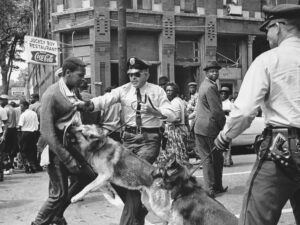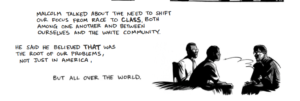Media’s turning point: Change in the Civil Rights
For most of the Civil Rights Movement media had brought shame to black people. However on this day when media took a 15 minute clip of the incident it all changed. On a certain Sunday in America Civil Rights leader John Lewis had led a march into Montgomery, Alabama. However this would be cut short as a militia had blocked the other side of a bridge they needed to cross. The Militia had yelled at them to leave but they did not they wanted to speak to the leader. The Leader told them to leave or else they would make them leave. After waiting there for two minutes John Lewis and the other people of the march were massacred. This incident was called Bloody Sunday. This made it onto national news and the people of America were shocked. They could not believe that this bruteness was happening in their own country. people started to rise up and this all led to a march on Washington where they gained millions of followers. The media covered that as well and this helped the movement tremendously. To the point of finally integrating society as one.
The media today has expanded tremendously with social media, TV news coverage, and more. The people of my generation including me primarily use social media. We can see what is going on in the world from a first hand perspective. I personally use Instagram,Tiktok,and Twitter. there are multiple ways to use it from new trends all the way to massacre’s like Bloody Sunday. I also believe that there are positive and negative ways to use social media. Pistive ways being: helping nature or donating to charities. While negative ways being to harm someone or counter a movement with hate. For example cuber bullying is a real problem into today’s world and it has driven people I know to suicide. People hide behind their screens and pick on one another without consequence. Believe that is the wrong use for social media. We Should use it to bring each other up and hopefully soon it will be that way.
#Insta #CivilRights


